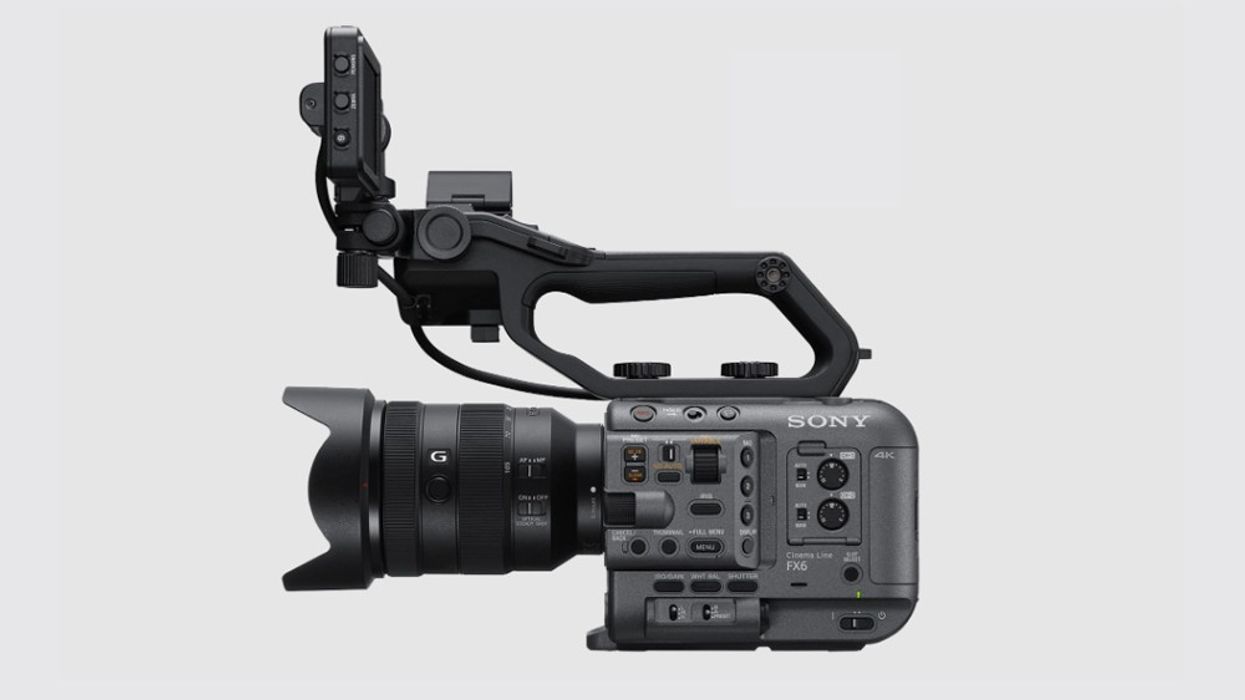3 Things You Didn't Know About the Sony FX6
The Sony FX6 combines the best of Sony’s cinema tech with Alpha features making it a compelling choice without sacrifices.

When Sony started updating their popular FS lineup to the newer FX lineup with the release of the FX9, users were instantly excited to see what the new FX6 would offer. Smaller than the FX9, the FX6 is targeted to different segments of the market with a bigger focus on filmmakers wanting a smaller camera that can shoot quality narrative footage. The FX6 combines features fit for live-action, documentary, wedding videography, ENG, or your next film project, making the FX6 one of the more versatile cameras for creating content.
While the biggest standout of the FX6 is its amazing autofocus performance, there are a few other key features that many users should know about with this dynamite camera.
Internal 4K 120fps
While it's tempting to look at the FX6 as just the "little buddy" to the FX9, it's important to remember that it's a camera designed for different things, has unique features, and in some respects, has improved specs over the FX9. High frame rate shooting is one of those areas. The FX9 currently on full HD offers 120fps, but the FX6 gives you internal 4K UHD 120fps, taking advantage of the new CFexpress Type A and SD hybrid card slots. You can even get up to 240fps recording full HD.

Full-sized audio interfaces are a vital part of professional workflows. If you are working on a narrative or documentary production, you want a robust audio interface so that the sound team can feed you a signal via XLR. This involves not just XLR ports, but also good-quality pre-amps so that the microphone level signal can be properly amplified.
However, those XLR ports and pre-amps take up physical space and add weight to a camera setup. The FX6 has moved the XLR inputs from the camera body to a removable top handle. This design decision allows having the XLR interface for all those jobs where you need it, but also lets you easily strip it off when you don't. For instance, gimbal or drone work. If you still need some form of audio, the FX6 also has a 3.5mm input as well.
If you are going to be using the FX6 for an extended period of time without needing the top handle, every ounce of weight savings you can get is worth it.

Modular Square Body
This isn't much of a surprise about the FX6, since you can see it, but it's something you might not appreciate. The body is more a square design than a rectangle. This is actually a big deal as we move toward more and more productions relying on gimbals and stabilized heads for their action camera shoots. Back in the days where Steadicam was the norm, a physically longer camera wasn't a problem. In fact, some film cameras offered two places to mount the magazine so that you could make the camera longer if you wanted. This allowed for the back of the camera to provide a counterbalance to the heavier lens on the front.
As we move toward more stabilized gimbal work, camera design needs to change with it. This is because to mount a camera on a gimbal, it needs to be properly balanced. Once you add a longer lens to the front and a battery to the back, we're talking about some serious length. A physically shorter, taller camera is a smart move for action cinematography where you are expecting to use a stabilizer for longer periods of time.
Conclusion
The FX6 serves as an important reminder that cameras serve different purposes. If you are a run-and-gun shooter, or looking for a versatile camera that can take flight in a drone or be placed on a gimbal, and still shoot for extended periods of time, the FX6 is a stellar option.














